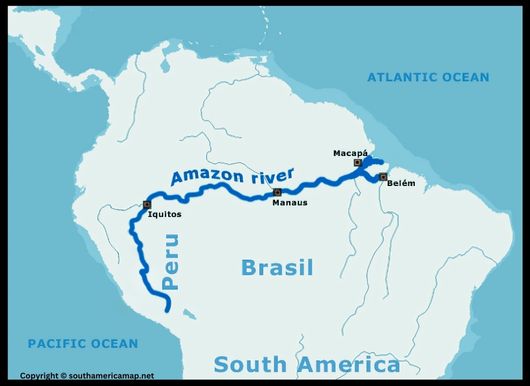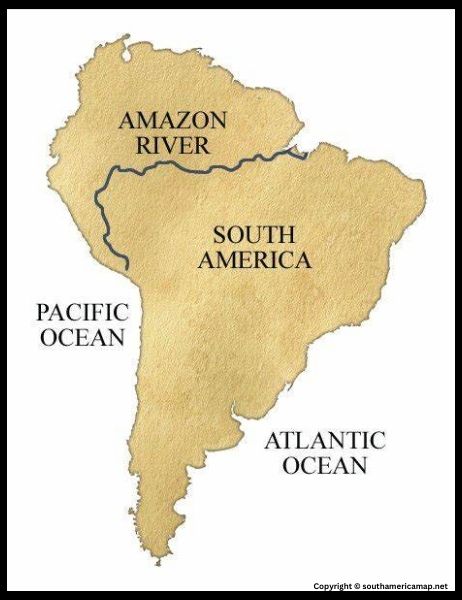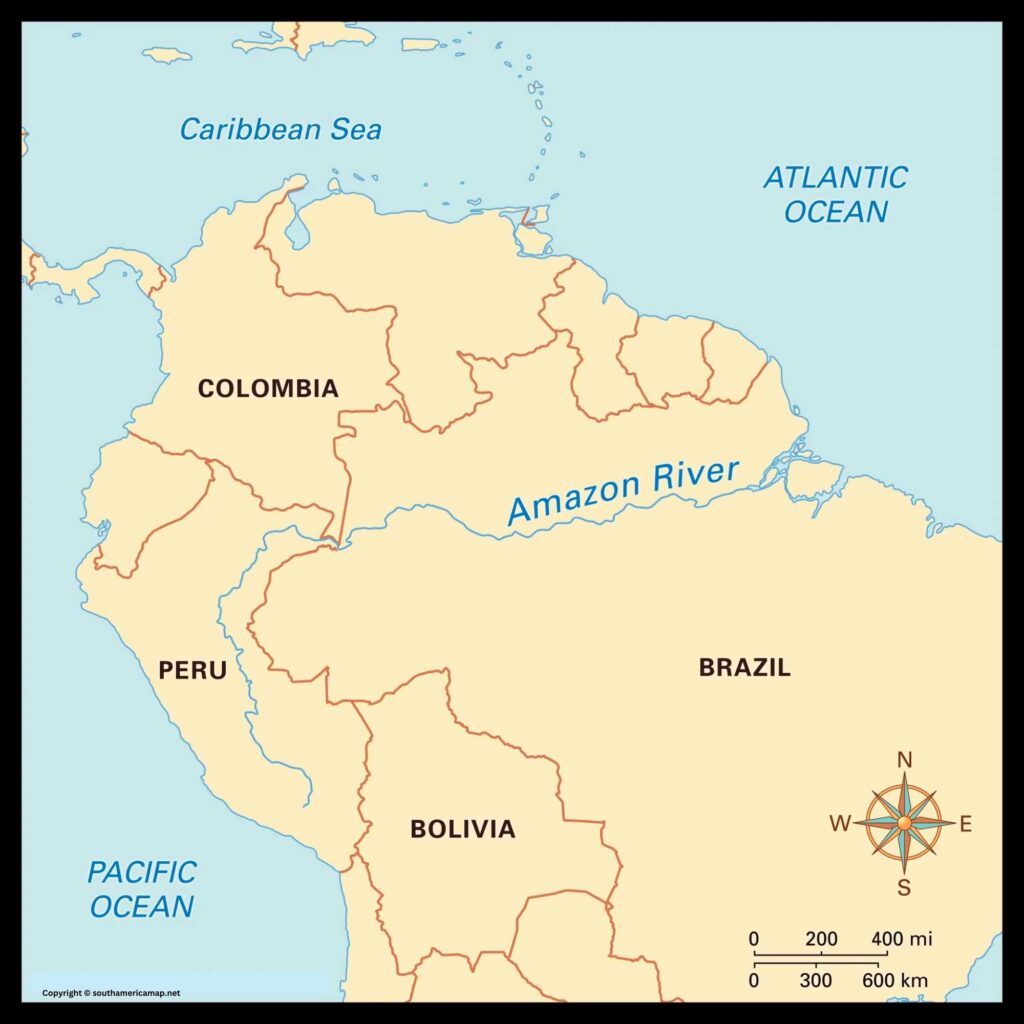Map Amazon River South America – The Amazon River, the second-longest river in the world after the Nile, is a colossal watercourse that weaves its way through the heart of South America. Originating in the Andes Mountains of Peru, the Amazon River meanders eastward across the continent, ultimately emptying into the Atlantic Ocean in Brazil. Its vast drainage basin, known as the Amazon Basin, spans over 7 million square kilometers (2.7 million square miles) and is home to the largest tropical rainforest on Earth, the Amazon Rainforest.
Related Post –
- South America Map with Capitals
- Peru Map
- North And South America Map
- Map of South America Countries
- Political Map
Map Amazon River South America
The Amazon River is a lifeline for the incredibly diverse ecosystems it traverses. Its extensive network of tributaries, including major rivers like the Rio Negro and Rio Madeira, contributes to its immense volume of water. During the wet season, the river can expand its width significantly, creating vast floodplains that support unique flora and fauna. The Amazon Rainforest, often referred to as the “lungs of the Earth,” plays a crucial role in global climate regulation, as it absorbs and stores massive amounts of carbon dioxide.
Navigating the Amazon River is an adventure through a pristine and largely untouched wilderness. The river is home to an astonishing array of wildlife, including iconic species such as jaguars, capybaras, river dolphins, and countless species of birds and fish. The lush vegetation along its banks hosts an extraordinary diversity of plant life, many of which have yet to be fully explored and cataloged by scientists.
Human communities have thrived along the Amazon River for centuries, with indigenous peoples adapting to the challenges and opportunities presented by the river and rainforest. The river serves as a vital resource for transportation, fishing, and agriculture for the local populations. However, the region faces various environmental and conservation challenges, including deforestation, habitat loss, and threats to biodiversity.
Tourists and researchers alike are drawn to the Amazon River to explore its unparalleled biodiversity, experience the unique cultures of the riverside communities, and contribute to efforts aimed at preserving this critical ecosystem. The Amazon River stands as a symbol of the incredible natural wealth and ecological importance of South America, and its preservation is of global significance.
Amazon River on South America Map
Mapping the Amazon River in South America holds significant importance for various reasons, ranging from environmental conservation to scientific research and economic considerations. Here are some key aspects highlighting the importance of mapping the Amazon River:
Biodiversity Conservation: The Amazon River basin is home to an incredibly diverse range of flora and fauna. Accurate mapping helps identify and protect critical habitats, enabling conservation efforts to safeguard the rich biodiversity of the region. Understanding the distribution of species and ecosystems is crucial for implementing effective conservation strategies.
Ecosystem Management: Mapping the Amazon River and its tributaries aids in managing the vast and complex ecosystems within the Amazon Basin. It allows scientists and policymakers to monitor changes in land use, deforestation, and other environmental factors, helping to mitigate the impacts of human activities on these ecosystems.
Climate Change Research: The Amazon Rainforest plays a vital role in regulating the global climate by absorbing and storing carbon dioxide. Precise mapping assists researchers in monitoring deforestation rates, carbon stocks, and the overall health of the rainforest. This information is crucial for understanding the impact of climate change and developing strategies to mitigate its effects.
Resource Management: The Amazon River and its basin provide essential resources for local communities and global industries. Mapping helps in sustainable resource management by identifying areas suitable for activities such as fishing, agriculture, and forestry, ensuring that these activities are carried out without compromising the long-term health of the ecosystem.
Amazon River South America Map
Navigation and Transportation: The Amazon River is a major transportation route, supporting commerce and travel in the region. Accurate maps aid in safe navigation, helping ships and boats navigate through the intricate network of waterways. This is especially important for trade and the transportation of goods in and out of the Amazon Basin.
Research and Education: Detailed maps of the Amazon River contribute to scientific research by providing a baseline for various studies, including hydrology, geology, and ecology. These maps are invaluable tools for researchers, educators, and students seeking to understand the complex dynamics of the Amazon River and its surrounding ecosystems.
Disaster Management: The Amazon Basin is prone to natural disasters such as floods and landslides, especially during the rainy season. Accurate mapping assists in identifying vulnerable areas, enabling better disaster preparedness and response. This is crucial for protecting both human populations and the environment.
In summary, mapping the Amazon River is integral to addressing the complex challenges and opportunities presented by this vast and vital region. It facilitates sustainable development, environmental protection, and a deeper understanding of the interconnected systems that make the Amazon River basin a critical component of the global ecosystem.


